For someone interested in Los Angeles art, Pacific Standard Time (PST), the Getty Initiative that connects over 60 Southern California cultural institutions and museums in an 11-month exploration and celebration of postwar Los Angeles culture, feels like a limited-time offer for an all-you-can-eat buffet. I have been visiting my parents’ home less and less over the past few years, feigning adulthood, but the advent of PST has rekindled my interest in visiting the old ancestral stomping grounds. This school year (2011-2012), I am capitalizing on my family connections and making three trips to Southern California—over Thanksgiving break, winter break, and in February for the CAA conference—to take in as much of PST as possible. Here, I’ll report on my pilgrimage in a series of three posts.

Itinerary: 24 exhibitions
Money spent on parking: $37.75
Money spent on tickets: $56.50
Tanks of gas: 2ish
Freeways traveled: the 5, the 57, the 55, the 73, the 133, PCH, the 60, the 10, the 710, the 605, the 110, the 105, the 210, the 91
Exhibition catalogs purchased (so far): 3
Tchotchkes purchased: Eyebolt, Sheila Levrant de Bretteville (1972/1978) from Otis

My previous PST trip had been a productive—if exhausting—whirlwind, but over winter break I was able to take 2.5 weeks to luxuriate in exhibitions. This was The Big One, the chance to see as many of the major shows as possible, along with some exciting smaller ones. Previously I had claimed distance as one of the main constraints of PST, since almost none of the shows are traveling. On this trip the limitation that felt most intrusive was instead chronology: the practical reality of mounting exhibitions at over 60 cultural institutions necessitates schedules that are not always convenient to viewers. But more on that later.
After the necessary holiday familial obligations, I started my PST excursions on 28 December in south Orange County. Laguna Beach does not have a great reputation when it comes to art—it is best known for Pageant of the Masters and for the amateur paintings of seascapes and houses sold at its many art fairs—but I was rewarded for my drive down to the Laguna Art Museum by Best Kept Secret: UCI and the Development of Contemporary Art in Southern California, 1964-1971 [$2 metered parking; $10 student entry]. The short period of focus in this show begins with the inauguration of the University of California, Irvine (UCI), and ends with the year that the first MFA class graduated. With its documentary theme, this exhibition could have been merely archival, but curator Grace Kook-Anderson established her brief with flexibility. Rather than limiting her checklist to works created between 1964 and 1971, Kook-Anderson based the show on the artists who had been students or faculty at UCI during that time, displaying contemporaneous or subsequent works, which made a better argument not only for the strong art culture at the school but for its enduring influence after its early high point. Best Kept Secret ended up numbering among my favorite shows of PST by adhering to my idiosyncratic list of desires: presentation of new-to-me artists and work alongside important and familiar pieces; a checklist big enough to have rhythm but small enough to have clarity; and exhibition design that made sense but also introduced unexpected relationships.
I have less to say about the next show that I visited, State of Mind: New California Art Circa 1970 at the Orange County Museum of Art (OCMA) [free parking; $10 student entry]. It was a good show—and art historically, a very important one—but difficult to experience as a viewer. I always have more trouble with exhibitions about conceptual and performance art; it’s a horrible academic reflex of mine that germinates the thought, “I’d rather go home and read about this stuff than read about it here.” Consequently, although I preferred visiting Best Kept Secret, I’m considering buying the catalogue for State of Mind. And given the larger purpose of PST, that’s probably a good juxtaposition—I experienced the art both as a viewer and as a scholar, acknowledging its powerful capacity to affect me personally and to shape the field broadly.
30 December was “Pasadena Day,” which I had been looking forward to with great anticipation. Pasadena is a city east of Los Angeles that reminds me of the city of my college days, Santa Barbara. Both towns are traditional suburbs, but both also have vibrant art cultures emerging as a result of unusually affluent dwellers and ethnically mixed populations. My first stop was the Norton Simon Museum of Art, [free parking—but beware those who try to leave their cars and walk to other museums, unless, of course, they have no compunction about lying to parking guards; free student entry] which is hosting Proof: The Rise of Printmaking in Southern California (open until 2 April). The show straddles the archival/visual line, tracing relationships of artists to major print shops and collectives like Tamarind, Gemini, and Cirrus, but also presenting works for their visual appeal and technical innovation. The assembly of prints by artists primarily identified as painters opened a dialogue about the Modernist legacy of media’s autonomy—some artists transposed their modes of painting as faithfully as possible onto paper, but others seemed inspired to explore entirely new formal avenues through printmaking.
My next show was Speaking in Tongues: The Art of Wallace Berman and Robert Heinecken, 1961-1976 at the Armory Center for the Arts [free parking; free entry]. This exhibition explored the careers of two artists, who each had a kind of alchemic touch—Berman’s tended to consecrate and Heinecken’s to indict. The magpie tendencies of both artists established an equivalent formal aesthetic of found images and collaged materials that created a cohesive visual environment.

A few PST shows deal specifically with the impact of artists of East Asian descent in California,[1] but the Pacific Asia Museum [free parking; $7 student entry] is presenting 46 N. Los Robles: A History of the Pasadena Art Museum (open until 8 April) because it is housed in the old building of the Pasadena Art Museum, which eventually became the Norton Simon and moved to its current address. The works, mainly on loan from Norton Simon, cover a broader time period than other PST exhibitions—beginning with paintings from the Blue Four, who were well represented by the museum due to the sympathetic patronage of Galka Scheyer, and moving through Abstract Expressionism, Assemblage, Light and Space, and Pop in only a few rooms. The Pasadena Art Museum was a groundbreaking institution, and while 46 N. Los Robles couldn’t do complete justice to its legacy, it at least sampled the significant art that was shown there.
I am going to admit an embarrassing mistake, cleverly disguised as a complaint (as mistakes so often are). In Pasadena, I visited the Pasadena Museum of California Art to see L.A. RAW: Abject Expressionism in Los Angeles 1945-1980,
From Rico Lebrun to Paul McCarthy. I walked over, paid, wandered into the museum, and promptly realized that the exhibition wasn’t open yet. There are five Pasadena-area institutions participating in PST,[2] but there were only two days that all five were open at the same time (21 – 22 January): inconvenient for day-trippers, and unworkable for cross-country-trippers. The piecemeal schedule of PST accommodates—even encourages—casual visits, but to cultivate a dedicated checklist one must either live in California or have gobs of money for frequent flights.
On 3 January, on the way up to Santa Barbara to move my sister back into her college dorm, we stopped at the Autry National Center to see Art Along the Hyphen: The Mexican-American Generation [free parking; $6 student entry]. Of the six artists featured, I mainly valued the work of the ceramicist Dora de Larios and the painter Alberto Valdés, whose oeuvre gives the impression that he was very skilled but never found the exact mode of expression he was looking for. I especially appreciated the exhibition’s dual-language exhibition design and the careful research that supplemented the show in the form of timelines and generous wall text.

Two days later, I brought a college friend along with me to Claremont, which has many draws: familial (on my dad’s side), personal (a charming downtown), and professional (the aforementioned advisor whom I stalk graduated from Pomona College and was involved in its PST exhibition). On the way we visited the American Museum of Ceramic Art (AMOCA) [free parking; $4 student entry] to see Common Ground: Ceramics in Southern California 1945-1975 (open until 31 March). I know little about ceramic art, but I am aware of the California artists, such as Peter Voulkos and John Mason, who worked with ceramics on a revolutionarily large scale at the mid-century. That show, however, is happening at Scripps College in Claremont, and didn’t open until 21 January (no comment). The show at AMOCA focused instead on the traditional realm of ceramics—mainly vessels and other functional objects—created through innovative techniques.
The exhibition at the Pomona College Museum of Art, It Happened at Pomona: Art at the Edge of Los Angeles, 1969-1973, is actually a three-part event [free parking; free entry]. Part 1 focused on curator Hal Glicksman. Part 2, which was on view when we visited, was subtitled Helene Winer at Pomona and covered the years 1970-1972. Part 3, At Pomona, will be open in March. The short number of years covered by the show would have entailed detailed study in any case, and one would expect that dividing up the subject into three parts would drag everything out to the point of excruciation. Simply put, it doesn’t. For reasons explored in the catalogue, this small liberal arts college was home to an avant-garde art scene that rivaled anything else occurring at that time. The tenor of the art in Helen Winer at Pomona was conceptual, whether “documentary,” such as John Baldessari’s Evidence: A Potential Print (1970/2011) and Allen Ruppersberg’s Where’s Al? (1972); performative, such as Bas Jan Ader’s I’m Too Sad To Tell You (1971) and Hirokazu Kasaka’s Untitled (1972); or experiential, such as William Leavitt’s California Patio (1972) or Ger van Elk’s The Return of Pierre Bonnard (1971/2011). Annoyed by the exhibition schedule but exulting in the work, I bought the catalogue, which itself is a thorough and innovative creation.
Although PST is an initiative ostensibly based in Los Angeles, by the latter part of my trip I had still spent very little time in the city. I dedicated three days in a row to rectifying this oversight, organizing my trips by location. On 6 January, my sister and I set out to Hollywood with the demanding agenda of seven exhibitions. Our first stop was the Architecture and Design Museum to see Eames Words, also advertised as Eames Designs: The Guest-Host Relationship [$1 metered parking; $5 student entry]. An unusual show, it featured quotes from the famous couple alongside quotidian objects—not necessarily their objects—a display, as the perky receptionist informed us, that was meant to inspire reflection. Our favorite room was undoubtedly the back gallery, where visitors could hop from Eames chair to Eames chair, testing six different designs while watching videos of Charles offering aphorisms encapsulating his design philosophy: “The role of the designer is that of a very good, thoughtful host, all of whose energy goes into trying to anticipate the needs of his/her guests.”

Nearby is the Craft and Folk Art Museum, which was hosting two exhibitions: The Golden State of Craft: California 1960 – 1985 and The Alchemy of June Schwarcz: Enamel Vessels from the Forrest L. Merrill Collection [$2 metered parking; $5 student entry]. The Golden State of Craft exhibition made an interesting pair with LACMA’s California Design (open until 3 June); the latter presents the glossy, commercialized version of California life that has perpetuated its reputation as a pleasantly superficial land of beauty, while the former investigated California design with a hempier edge, through objects created with the values of “rustic simplicity, environmentalism, the use of indigenous materials, [and] the handcrafted over the machine” in mind.
PST is introducing Southern California residents not only to the region’s own artists, but to its own venues and institutions. I had never been to the Los Angeles Municipal Art Gallery, and I was excited to visit the complex for one location of Civic Virtue: The Impact of the Los Angeles Municipal Art Gallery and the Watts Towers Arts Center [free parking; free entry]. The show was evocative and informative, tracing the history of the gallery and its artistic impact amidst the famously conservative culture of mid-century Los Angeles, in which artists did not address a public accustomed to encountering avant-garde visual art. Civic Virtue has its own website, where a downloadable PDF of the exhibition catalogue essay by Pilar Tompkins Rivas is available.

So: what I previously wrote regarding exhibitions about performance and conceptual art? Los Angeles Goes Live: Performance Art in Southern California 1970-1983 at the Los Angeles Contemporary Exhibitions space (LACE) made me take it all back [$2 metered parking; free entry]. Curator/artist Ellina Kevorkian mounted a compelling exhibition that had me running back to my car to put more quarters in the meter so I could stay a little longer. Remnants of performances were expressively, instead of clinically, staged, and lengthy wall texts were replaced by user-directed technology. Visitors could call a phone number to hear an artist or participant describe whichever piece they chose, and the display technique was effective—I listened to much more text than I ever would have read, and I remember the pieces I selected in much more detail than usual. My sister and I then ended the evening with two small shows: Sympathetic Seeing: Esther McCoy and the Heart of American Modernist Architecture and Design at the MAK Center for Art and Architecture at the Schindler House [free parking; free Friday night entry] and Cruising the Archive: Queer Art and Culture in Los Angeles, 1945-1980: Wink Wink (open until 31 May) at the ONE Archives Gallery & Museum [$1.25 valet parking; free entry].
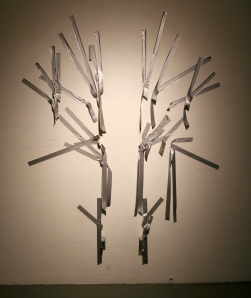

Saturday, 7 January, was one of my favorite experiences of PST. I began by dipping quickly into the Watts Towers Arts Center for the other, much smaller, section of Civic Virtue: the Impact of the Los Angeles Municipal Art Gallery and the Watts Towers Art Center [free parking; free entry]. Leaving Watts, I looped by LAX airport to the inauspiciously placed Otis College of Art and Design for Doin’ It in Public: Feminism and Art at the Woman’s Building [free parking; free entry]. This fascinating show completely sucked me in, as evidenced by my tchotchke purchase. It recounted the history of the Woman’s Building—its inauguration, existence, impact, and spin-offs—in exhaustive detail, but kept the exhaustion factor itself low, with a variety of materials and engaging display. Having stayed at Otis much longer than I had anticipated, I hurried up north along the 405 (braving “bougie traffic” in Ice Cube’s analysis in this PST promotional video) to the Hammer Museum of UCLA on the penultimate day of Now Dig This! Art and Black Los Angeles 1960-1980 [$3 parking; free closing entry]. Now Dig This! has rightly been hailed, along with Phenomenal, as one of the most important exhibitions of PST; like Phenomenal, it investigated a relatively narrow scope in sustained detail, excavating important artists and works and presenting new material while proving, by the very rigorousness of its study, that its subject is replete with still-unexplored potential.

My day would have been full and rich enough had I stopped at this point, but I had one last visit to make to the J. Paul Getty Museum—the engine of the machine—for its four PST exhibitions [$10 parking after 5pm; free entry]. The fulcrum exhibition, Pacific Standard Time: Crosscurrents in L.A. Paintings and Sculpture, 1950-1970, was not meant to be comprehensive, but instead provided identifiable cross-sections of the art work and trends of its 20-year period: hard-edge, assemblage/collage, “L.A. Look,” abstract painting, perception and process, and conceptualism. The exhibition was smaller than many others, but beautiful and confident in its size. Instead of including many things, the Getty included the best things, representing most of the major postwar Los Angeles artists with one piece. So many of my favorite pieces were included, it felt like visiting friends—or, more accurately, finally seeing friends in the flesh who had previously been online buddies, and finding them stunning: Blue Wall by John Mason (1959), Cloud Box by Peter Alexander (1966), Walter Hopps Hopps Hopps by Ed Kienholz (1959), Ocean Park No. 67 by Richard Diebenkorn (1973)… You know what? Just go buy the 300+ page tome of a catalogue.

The Getty also put on three other highly focused PST exhibitions. From Start to Finish: De Wain Valentine’s Gray Column was a captivating one-room investigation of by Valentine, who is known for his scientifically complicated, chemically technical, and conservationally challenging resin sculpture. It was one of the few times I’ve appreciated the integration of iPad technology into exhibition display—multiple stations provide viewers with two video choices (I watched them all anyway). In Focus: Los Angeles, 1945-1980 (open until 6 May) is also a one-room exhibition, arranging Los Angeles photography under four themes: Experimental Photography, Vernacular Architecture, Car Culture, and Fantasy and the Film Industry. The last exhibition, Greetings from L.A.: Artists and Publics 1945-1980 over at the Research Institute, documented the display-side of the art world through exhibition announcements, gallery opening invitations, photographs, and other ephemera. I ended the evening right before the Getty closed at 9 P.M. with a night-time walk through Robert Irwin’s mesmerizing garden, which affords a spectacular view of the freeway and the city to the south, and the dramatically lit Richard Meier architecture to the north.

On 8 January, the final exhibitions of my winter trip provided a pleasing symmetry of contrasts: the tightly focused Artistic Evolution: Southern California Artists at the Natural History Museum of Los Angeles County, 1945-1963 at the Natural History Museum of Los Angeles County (NHM) [$10 parking; $4.50 evening student entry] and the sprawling Under the Big Black Sun: California Art 1974-1981 at the Museum of Contemporary Art’s Geffen Contemporary (MOCA) [$6.50 lot parking; $5 student entry]. I was somewhat apprehensive about Artistic Evolution since I felt I had spent an inordinate amount of money to view what I knew would be a small exhibition, but I was floored by the show. Before 1965 the museum was called The Los Angeles County Museum of Science, History, and Art, and the rotunda exhibition includes pieces (or ones approximating them) shown at the museum’s art fairs during that time. I appreciated it for its inclusion of rare early work, including multiple pieces by Robert Irwin (from as early as 1953) and even a pre-Cremation Project Baldessari work (Micropainting, 1960). The museum didn’t allow photography in the exhibition and didn’t publish a catalogue, only a “brochure”—as the employee in the store told me—which ran out quickly and was not reprinted, unfortunately.
What to say about MoCA’s Under the Big Black Sun? It was gargantuan (over 500 works). It was complicated. It was intimidating. The large, messy exhibition was not my favorite, but that was probably due to my own failings. The show contained seminal artworks and, as many reviewers have noted, did nothing if not manifest postmodern profusion. It asked a lot of me as a viewer, especially at the very end of my two-week pavement pounding, and I am not sure I was able to answer it. So I did the responsible thing and bought the catalogue, trusting that the highly qualified essayists featured therein would help a girl out. As Tyler Green wrote, it may be the PST publication that “launches a thousand PhD dissertations.” Here’s hoping.
1. Drawing the Line: Japanese American Art, Design, and Activism in Post-War Los Angeles at the Japanese American National Museum, Breaking Ground: Chinese American Architects in Los Angeles (1945-1980) at the Chinese American Museum, and ‘Round the Clock: Chinese American Artists Working in Los Angeles at the East Los Angeles College museum.
2. I didn’t visit the Huntington Library and Garden, hosting The House That Sam Built: Sam Maloof and Art in the Pomona Valley, 1945-1985.
In Part 3 I’ll cover my experience at two final exhibitions, plus PST at CAA!

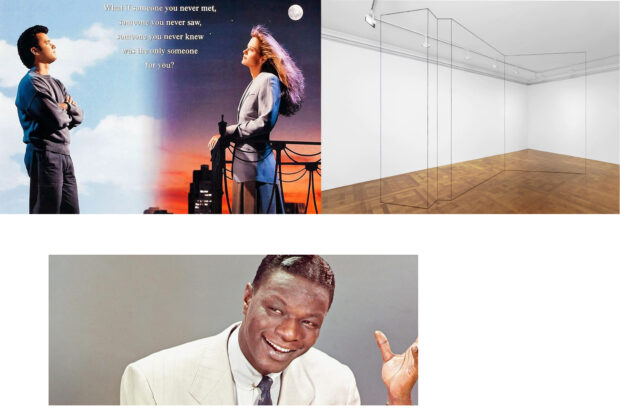


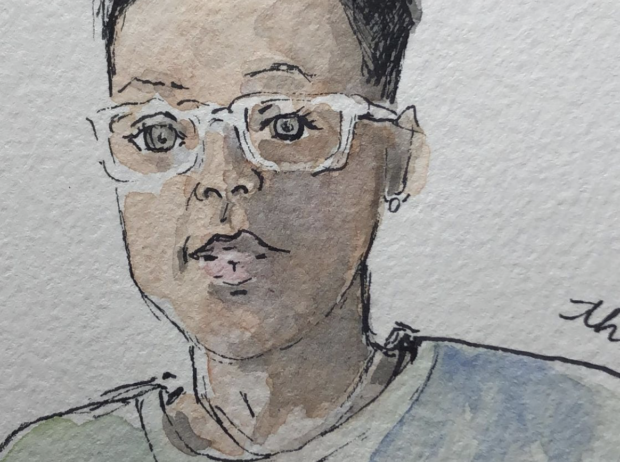
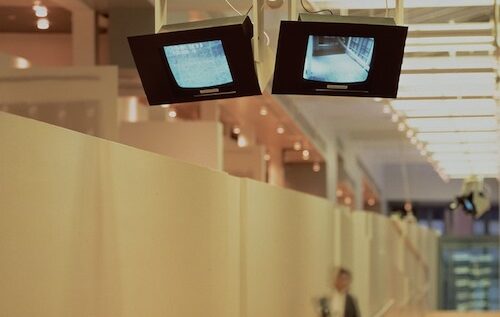
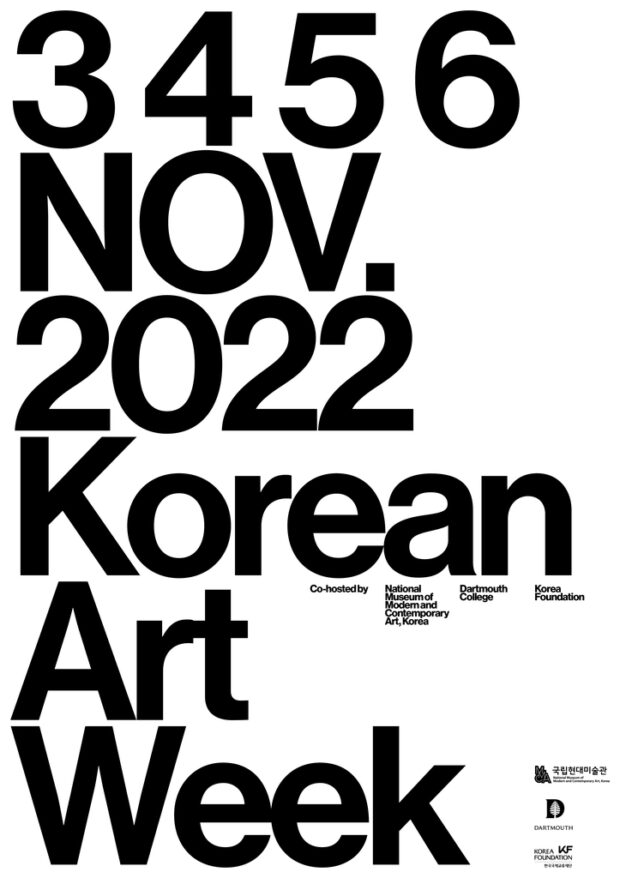


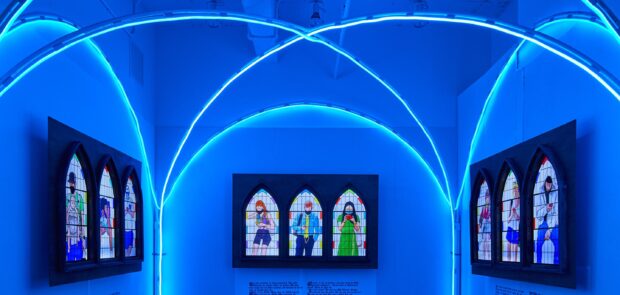

I am loving these posts — like virtual pilgrimage for those of us who can’t make it all the way across the country!
[…] on my family connections and making three trips to Southern California—over Thanksgiving break, winter break, and in February for the CAA conference—to take in as much of PST as possible. Here, I’ll […]
[…] on my family connections and making three trips to Southern California—over Thanksgiving break, winter break, and in February for the CAA conference—to take in as much of PST as possible. Here, I’ll […]